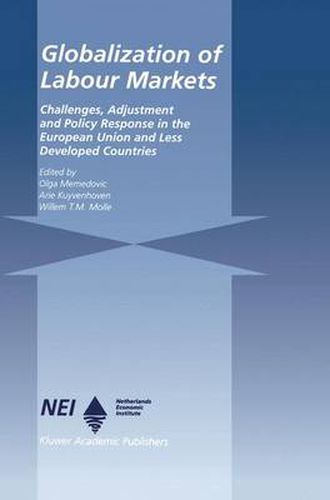Readings Newsletter
Become a Readings Member to make your shopping experience even easier.
Sign in or sign up for free!
You’re not far away from qualifying for FREE standard shipping within Australia
You’ve qualified for FREE standard shipping within Australia
The cart is loading…






This title is printed to order. This book may have been self-published. If so, we cannot guarantee the quality of the content. In the main most books will have gone through the editing process however some may not. We therefore suggest that you be aware of this before ordering this book. If in doubt check either the author or publisher’s details as we are unable to accept any returns unless they are faulty. Please contact us if you have any questions.
To the classical forces of migration such as poverty, oppression and war, yet another is being added: globalization. The trend toward globalization has created new opportunities for trade and investment. These have had positive implications for economic growth and living standards. However, they also confront developed and less developed countries (LCDs) with difficult policy choices. Developed Countries (DCs) have to find a compromise between competitiveness and high labour costs, and between trade liberalization and immigration controls. LCDs have to decide whether to export labour or goods, and to accept foreign resources for development rather than migration. While, in the literature, the impact of globalization has been largely studied from specialist perspectives, this volume offers a comprehensive view of the issue. In this work there is explaination of the welfare implications of export of goods and labour from LCDs to the DCs from the perspective of both international and labour economics; shedding of light on the possible relationship between foreign direct investment and migration; an offering of a better understanding of the experiences of Asian, Latin American and African countries with exporting goods or labour; and a discussion of the different policy responses to the globalization of labour markets in the European Union, East and South-East Asia and Latin America, while being aware of inter-country variations within these regions.
$9.00 standard shipping within Australia
FREE standard shipping within Australia for orders over $100.00
Express & International shipping calculated at checkout
This title is printed to order. This book may have been self-published. If so, we cannot guarantee the quality of the content. In the main most books will have gone through the editing process however some may not. We therefore suggest that you be aware of this before ordering this book. If in doubt check either the author or publisher’s details as we are unable to accept any returns unless they are faulty. Please contact us if you have any questions.
To the classical forces of migration such as poverty, oppression and war, yet another is being added: globalization. The trend toward globalization has created new opportunities for trade and investment. These have had positive implications for economic growth and living standards. However, they also confront developed and less developed countries (LCDs) with difficult policy choices. Developed Countries (DCs) have to find a compromise between competitiveness and high labour costs, and between trade liberalization and immigration controls. LCDs have to decide whether to export labour or goods, and to accept foreign resources for development rather than migration. While, in the literature, the impact of globalization has been largely studied from specialist perspectives, this volume offers a comprehensive view of the issue. In this work there is explaination of the welfare implications of export of goods and labour from LCDs to the DCs from the perspective of both international and labour economics; shedding of light on the possible relationship between foreign direct investment and migration; an offering of a better understanding of the experiences of Asian, Latin American and African countries with exporting goods or labour; and a discussion of the different policy responses to the globalization of labour markets in the European Union, East and South-East Asia and Latin America, while being aware of inter-country variations within these regions.